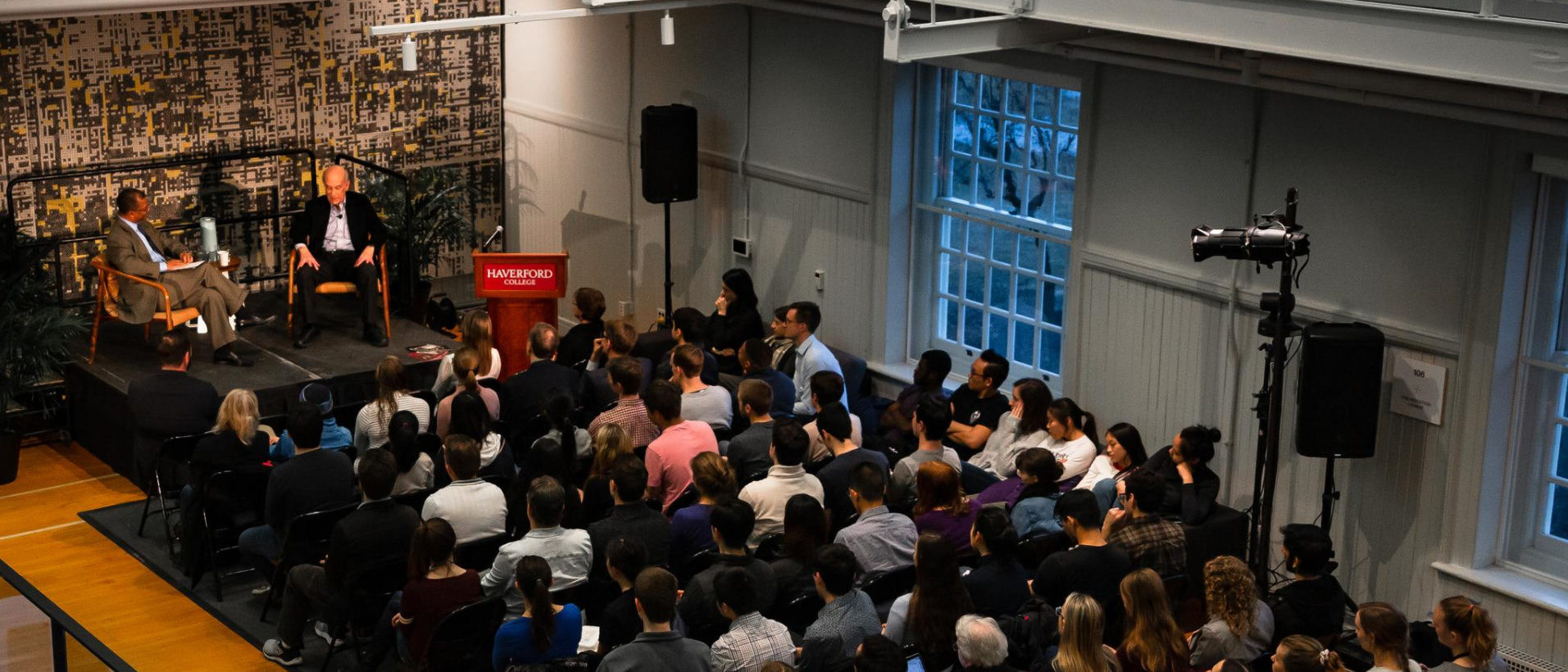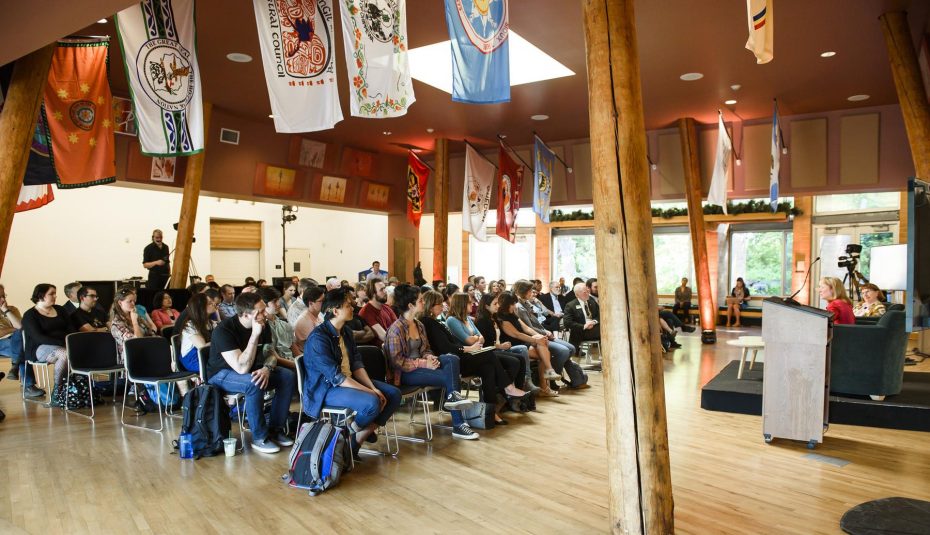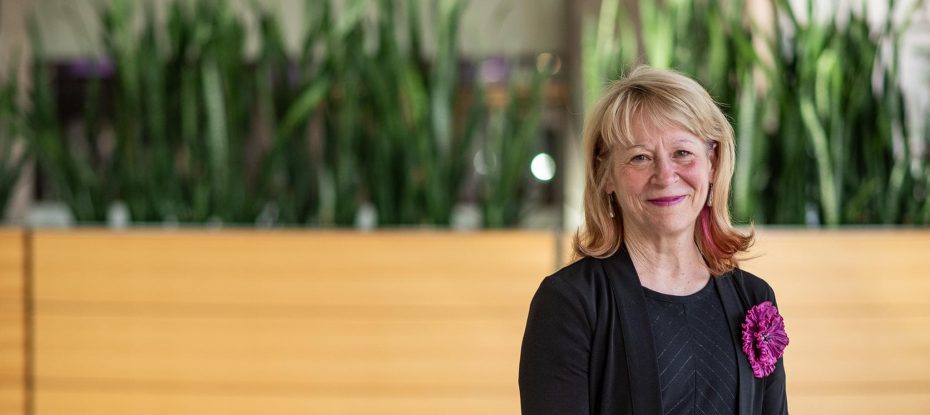Groundbreaking chemist Stephen Lippard helped develop platinum-based anticancer drugs, and his research is central to understanding how metal compounds interact with DNA — but he could not have achieved such feats without powerful me
Lippard, who earned the 2004 National Medal of Science for his pioneering research in bioinorganic chemistry, emphasized the importance of role models for young scientists in a recent discussion with Ted W. Love, the CEO of Global Blood Therapeutics. The discussion was hosted by the National Science and Technology Medals Foundation at Haverford College, Lippard and Love’s alma mater.
Lippard, the Arthur Amos Noyes Professor Emeritus of Chemistry at MIT, credits his early mentors with helping him find his path — first to college, then to research.
He said the key to finding a role model or mentor is to look for “somebody out there that you would really like to be, that you’re not jealous of, that you just think so much of them.”
“That’s how I felt about Bob Miller,” Lippard said of a camp counselor, who was attending Haverford College when Lippard was in high school.
Looking up to Miller led Lippard to Haverford for his undergraduate degree. That’s where he found another mentor, chemistry professor Colin MacKay.
“He took me on as a research student,” Lippard said. “I cannot tell you that I did anything publishable as a Haverford undergraduate — in terms of research — but I learned what it was all about. I learned that science had truths that could be discovered.”
MacKay taught chemistry at Haverford for 40 years, and his teaching philosophy included research as an integral part of undergraduate education. MacKay passed in August 2018.
“He took me in his car on the weekends to Yale, where he did his research because he needed a piece of apparatus that was only at Yale, a heavy ion accelerator,” Lippard said. “We bombarded chemicals, so-called hot atom chemistry, and brought them back [to Haverford].”
MacKay also needed a gas chromatograph for his research, a tool used to separate and analyze compounds that won’t decompose when vaporized. MacKay built the tool with Lippard’s help, teaching him research and resourcefulness along the way.
“When I was at Yale, I could see the graduate students and what they worked on and interacted with some of them. I found that to be very exciting,” Lippard added.
MacKay’s mentoring sparked Lippard’s interest in research.
“[I liked] the idea that you could make something that no one had seen,” Lippard said. “An even higher call was: You could understand something that maybe people had studied for a hundred years and didn’t understand. But all of the sudden if you have the right thoughts or the right experiment or you happen to be watching when it happens in front of you in the lab — and not off in a movie somewhere — you would be able to come up with something that was really exciting.”
“Collin brought me that,” he added.
MacKay’s mentoring was necessary when Lippard began conducting his own research, a challenging shift for many researchers.
“Going out on your own is a different type of challenge,” he said. “Nobody tells you what the problem is — you have to create it all.”
Lippard said the independence came with a drawback.
“I was full of ideas. I started working on six or eight projects at once, which was not a great thing,” he said. “It took a long time for anybody to realize that I was even out there because I did it that way, but I learned a lot like that.”
The support of his family also made his research possible, Lippard said.
“It all was Judy,” Lippard said of his late wife.
“I went to one mixer in my life — that was it,” he said. “I tapped her on the shoulder, we danced, and the rest is history.”
At the time, Lippard was a postdoctoral researcher at MIT, and she was an art major at Simmons University.
“She was 21 and I was 23 when we got married,” he said. “She was a great artist. She could paint. She could do sculpture. She could do woodcuts. She could metal work and so forth.”
“I wanted her to have her own independent career and was perfectly willing and happy to dig in … but she empowered me. Judy wanted to raise the family, and so she did. She did everything.” he added.
With her support, Lippard was able to focus on his research, which led to anticancer drugs. This paved the way for other researchers working on cancer treatments and shed light on the role of metal ions in signaling processes in the brain. His research has also led to cleaner fuel technologies.
But despite all the transformative research and scientific achievements that have happened in his lifetime, Lippard is still cautious about the environment in which the science community finds itself today.
Lippard said the real concern should be regulations, as well as a lack of focus and funding on research, that are hindering scientific advancement and the implementation of helpful innovations and technologies.
“It’s important to worry about things like that, but you cannot worry to the point of paralyzing what you are doing,” Lippard said.




